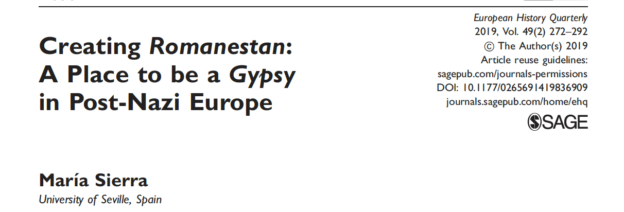Los días 20 y 21 de mayo de este año se celebró en la Universidad de Barcelona el Coloquio “Los Contornos del Control”, organizado por el Departamento de Geografía y Sociología de la Universidad de Lleida y la revista GeoCrítica. El encuentro, coordinado por Pedro Fraile Pérez de Mendiguren y Quim Bonastra pretendía dar continuidad a una iniciativa que se remontaba, en colaboración con universidades canadienses, al año 2000 y que entonces se materializó en, además de intercambios productivos desde distintos ámbitos geográficos y disciplinas académicas, en un libro colectivo, Modelar para gobernar. El control de la población y el territorio en Europa y Canadá. Una perspectiva histórica (Universidad de Barcelona, 2001).
Los días 3 y 4 de Junio se ha celebrado en Bilbao el V Seminario Internacional Devenir hombre. Historia de las masculinidades, organizado por el grupo de investigación de la Universidad del País VAsco «Experiencia Moderna». Nerea Aresti, Javier Diez Freire, Miren LLona y Mercedes Arbaiza, están detrás de esta convocatoria que reunió a especialistas interesados en cómo el género se cruza con las emociones y otras claves explicativas en la conformación de las masculinidades normativas, hegemónicas, alternativas, subalternas… durante los siglos XIX y XX.
El Proyecto Historia de los gitanos estuvo presente a través de la participaciçon de María Sierra, que presentó una ponencia titulada «La figura del gitano y la construcción emocional de la virilidad burguesa: pasiones para una masculinidad subalterna». Esta intervención atiende a la construcción de la masculinidad asignada a los gitanos por parte de diversos observadores de la sociedad mayoritaria, entendiendo que es un espacio especialmente propicio para analizar la imbricación de los discursos sobre el género y las emociones propios de la modernidad occidental. Viajeros, estudiosos y artistas de fuera y dentro de España construyeron una representación de la virilidad gitana como una masculinidad subalterna -marcada por la barbarie y la falta de contención-, empleando preferentemente el lenguaje de las emociones, a la vez que asignando emociones supuestamente naturales al “otro” gitano por contraste con las emociones consideradas civilizadas.
Mañana, día 23 de Mayo de 2019 celebramos el IV Taller de nuestro proyecto de investigación. La reunión tendrá lugar en la Facultad de Geografía e Historia de la Universidad de Sevilla (Sala de Juntas), a las 12 de la mañana. En esta ocasión, tenemos la oportunidad de escuchar a Massimo Aresu, investigador de la Universidad de Leeds que está desarrollando un interesante proyecto apoyado por una ayuda Marie Curie. Massimo Aresu, buen conocedor de la historia moderna del pueblo gitano en Italia, se ha planteado un proyecto de historia comparada del pueblo gitano durante los siglos XVI, XVII y principios del XVIII. Aprovechando el marco político del imperio español, se plantea estudiar la vida de las comunidades gitanas de Cerdeña, Sicilia y Andalucía durante este largo periodo con el objeto de someter a crítica las visiones acuñadas sobre nomadismo, segregación y otras representaciones historiográficas habituales sobre el pueblo romaní. Su revisión crítica no se basa solo en la relectura de la bibliografía existente sino que, especialmente, le está llevando a una intensa labor de localización de fuentes en archivos de Italia y España.
This article examines the political formula of Romanestan as conceived by Ionel Rotaru (1918–1982), a Romanian refugee in France after the Second World War. Romanestan is the most visible aspect of an ambitious plan demanding rights for those labelled Gypsies throughout the world. This study is of interest because it sheds new light on the problems of social and political readjustment after the Second World War from the standpoint of racial exclusion. Rotaru’s project was both the response to longstanding historical racist aggression and also a crucial turning point in the formation of Romani ethnic identity. What makes its study interesting is that the formula of the Romanestan wove the right to exist of those regarded as Gypsies into a creative transnational political project. Based on classified documents, this article highlights the political nature of processes of ethnicization and assesses the performative power of symbols.
A escasas semanas de empezar oficialmente el proyecto europeo BESTROM financiado en la convocatoria HERA – Public Spaces, hemos recibido del Irish Research Council, que opera como agencia gestora del programa europeo en esta fase, el siguiente flyer de lanzamiento, que acogemos con alegría puesto que destaca en su parte central y bajo la idea de MINORITIES CONTRIBUTION nuestro proyecto.
El día 2 de Abril colaboramos en las actividades culturales de la Hermandad de los Gitanos de Sevilla con una conferencia dedicada a la historia del pueblo gitano y, en particular, al papel de las mujeres gitanas en determinados episodios del pasado. Bajo el título «La mujer en la historia del pueblo gitano», María Sierra se encargó de exponer varios de los resultados del proyecto Pendaripen. Gracias a los recientes trabajos de Manuel Martínez Martínez pudimos entrar con detalle en su forma de resistencia durante el Plan General de Prisión de 1749, de igual manera que sobre la base de los trabajos de María Sierra sobre los estereotipos en torno a las mujeres gitanas propios del Romanticismo y tiempos posteriores pudimos ofrecer una reflexión sobre el impacto de las representaciones exógenas en las vidas reales de las personas ‘imaginadas’. Ofrecimos, de igual manera, una propuesta de trabajo para el estudio de la vida cotidiana de los gitanos y las gitanas de Sevilla durante los siglos XIX y XX.










 Créditos fotográficos: el blog emplea sin ánimo de lucro imágenes libres de derecho de autor, imágenes cuyos autores no han podido ser localizados e imágenes indispensables para sostener los argumentos científicos de los distintos artículos. Si alguien desea hacer constar derechos sobre imágenes, puede escribir a la dirección
Créditos fotográficos: el blog emplea sin ánimo de lucro imágenes libres de derecho de autor, imágenes cuyos autores no han podido ser localizados e imágenes indispensables para sostener los argumentos científicos de los distintos artículos. Si alguien desea hacer constar derechos sobre imágenes, puede escribir a la dirección